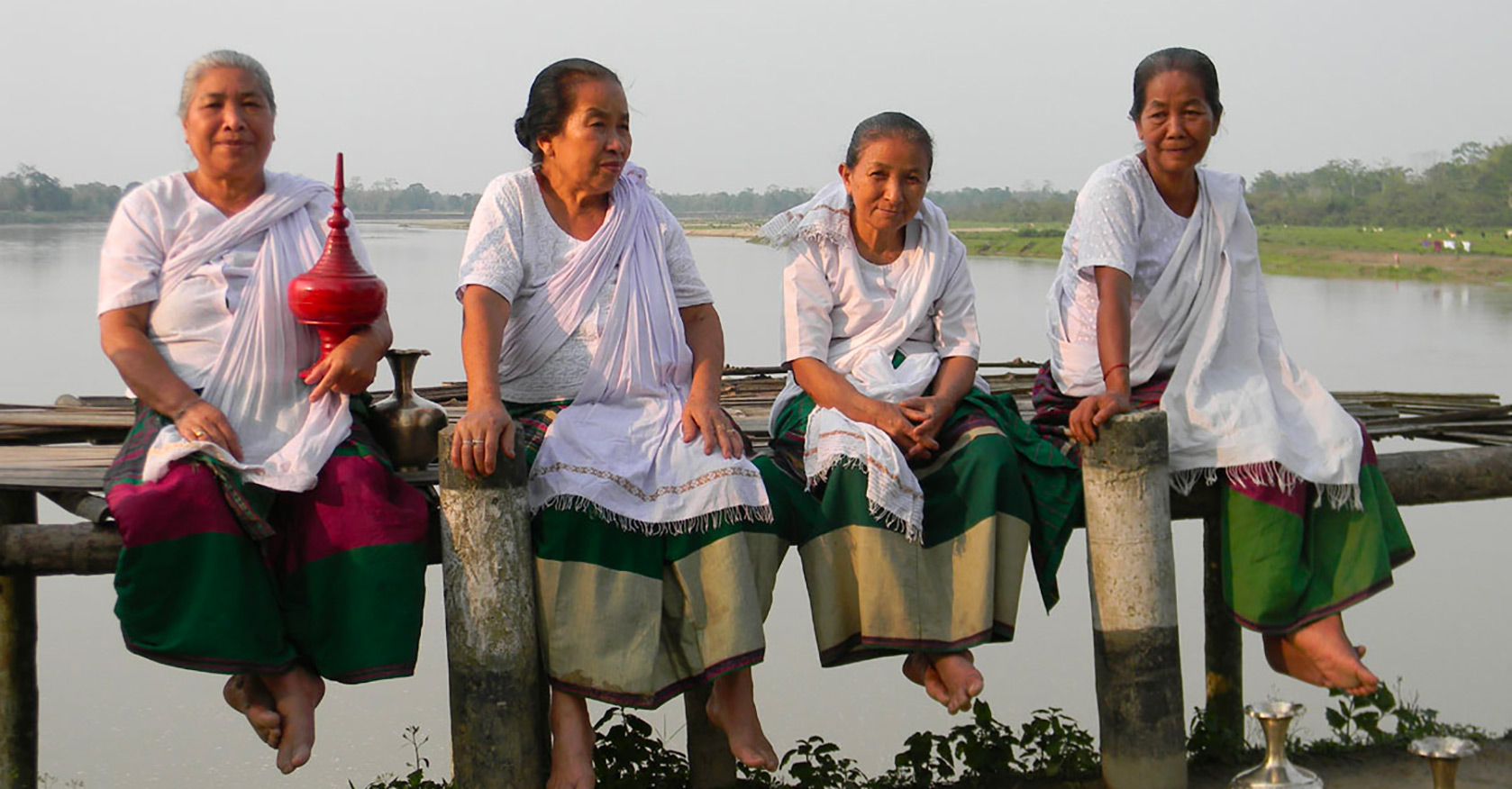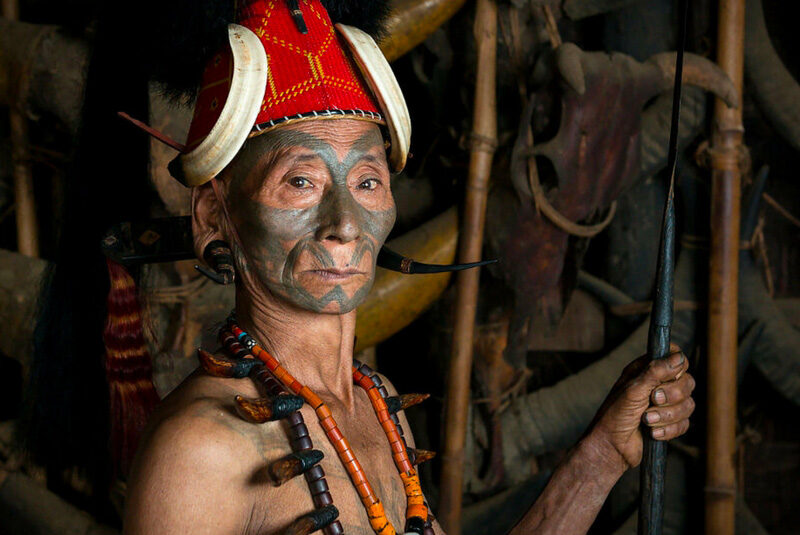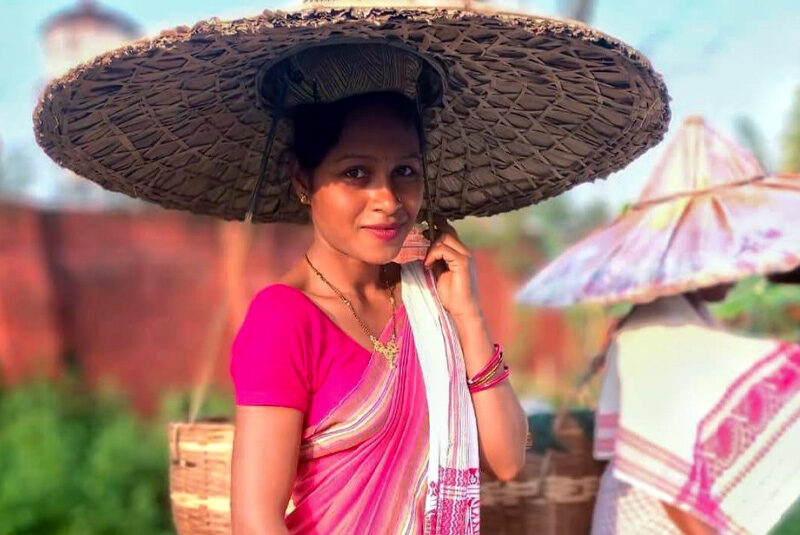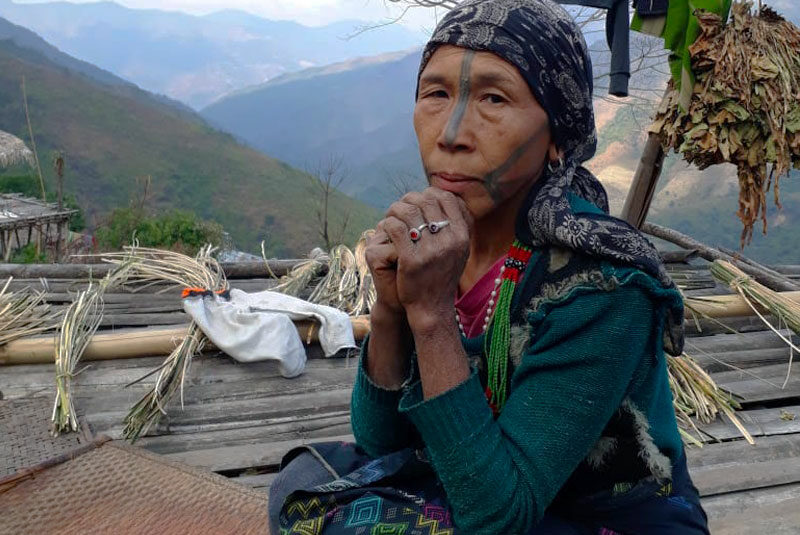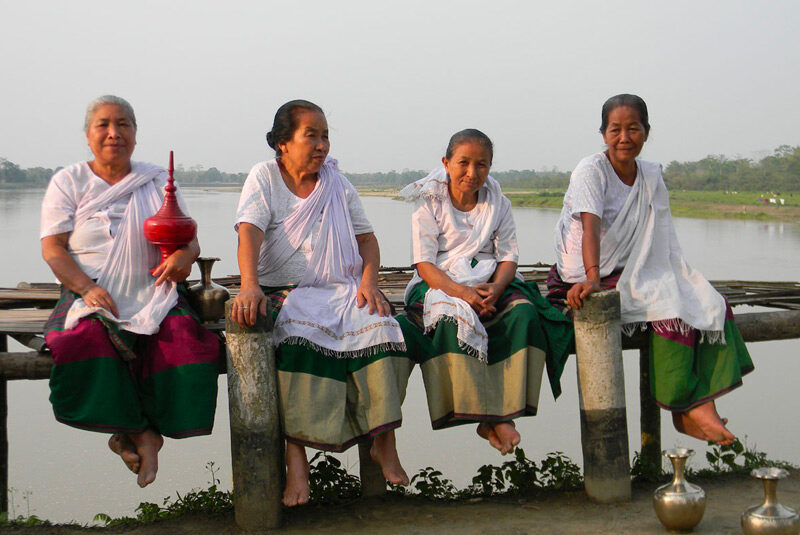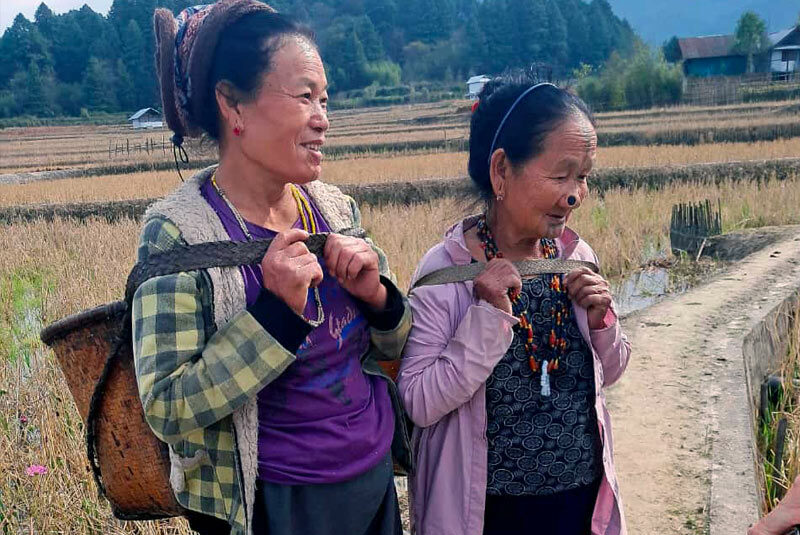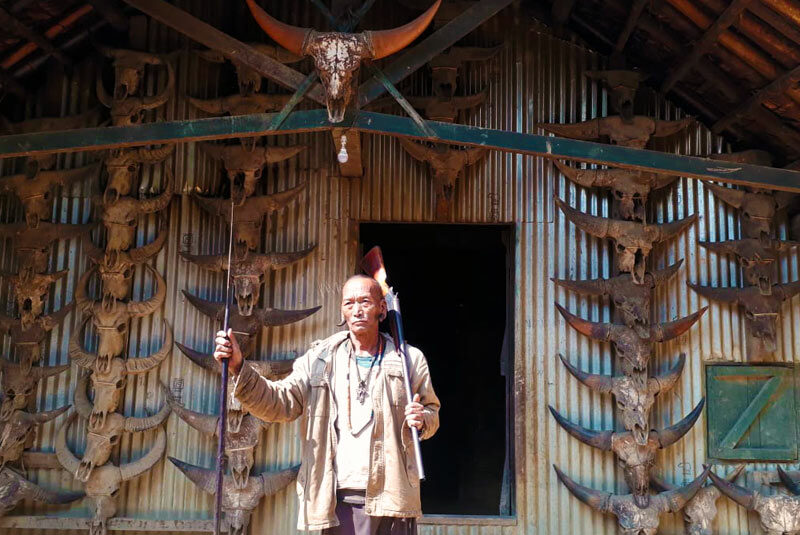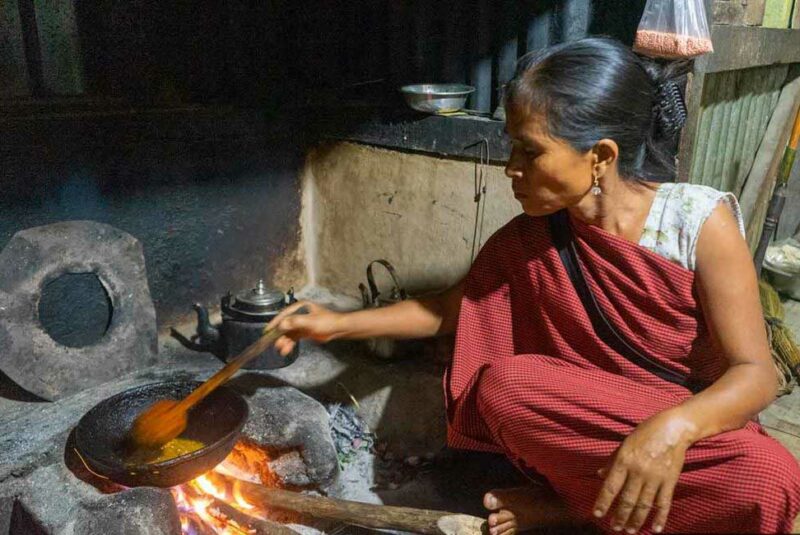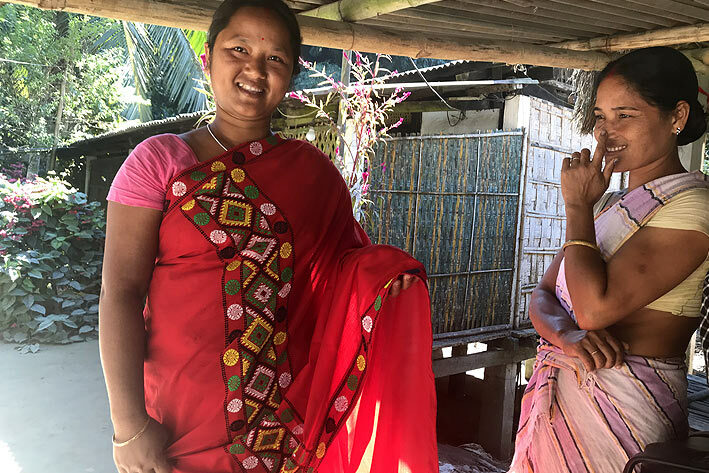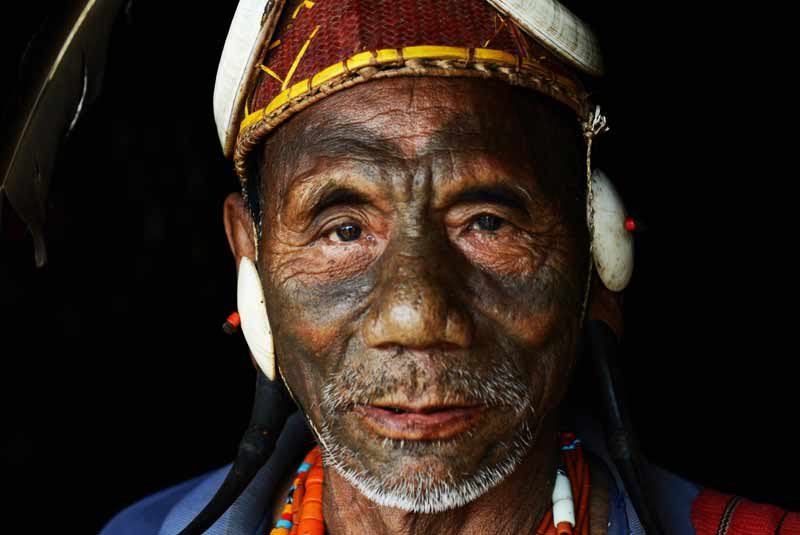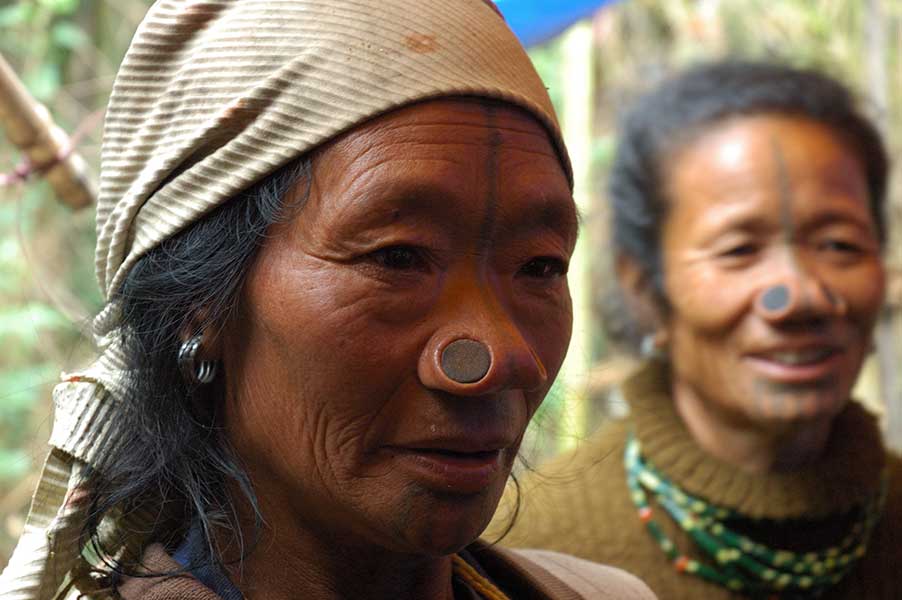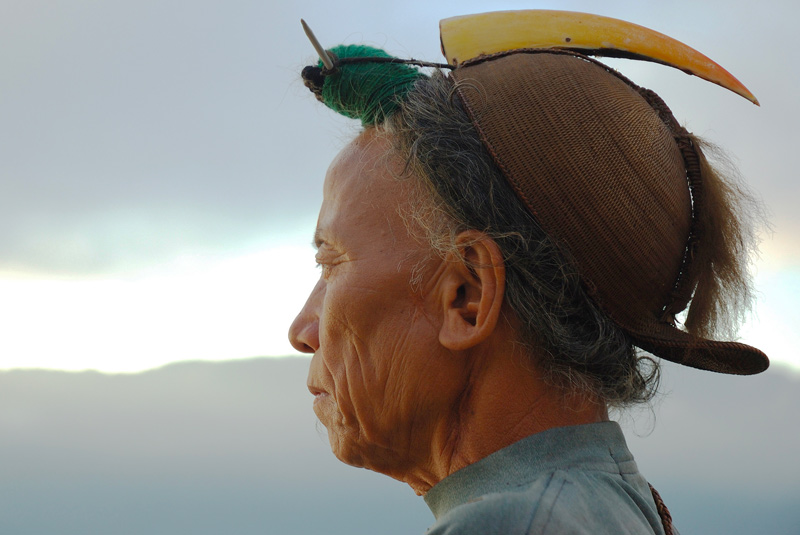Grand ethnic tour in four “Seven Sisters”
Discover the undiscovered heart of India on a 30-day grand ethnic tour that takes you through four unique states: Meghalaya,Assam, Nagaland, and Arunachal Pradesh. This journey is a deep immersion into the tribal cultures and ancestral traditions of Northeast India.
Northeast India, a crossroads of cultures, pristine landscapes, and ancestral traditions, remains one of the least explored regions of the subcontinent. This grand ethnic tour invites you on an exceptional journey, off the beaten track, to the heart of a mosaic of unique peoples and lifestyles in four of the “seven sisters” of the Northeast: Assam, Arunachal Pradesh, Nagaland, and Meghalaya.
From the fertile plains of Assam, the cradle of tea and Assamese culture, to the rugged mountains of Arunachal Pradesh, a land of isolated tribes and breathtaking landscapes, each stop on this itinerary has been designed to connect you with the history and customs of its inhabitants.
You will venture into Nagaland, once known as the “Land of Warriors,” where the art of weaving and colorful festivals tell tales of tribal pride. Finally, Meghalaya, the “Abode of Clouds,” will reveal the fascinating matriarchal society of the Khasi and their feats of natural engineering, through the famous living root bridges.
This journey is an ode to diversity, a rare opportunity to meet people who have preserved their identity in the face of modernity.
Who is this trip for?
- Culture and ethnography enthusiasts: Those seeking to understand tribal lifestyles, ancestral traditions, and the history of the people who inhabit these regions.
- Responsible tourism enthusiasts: People who want a trip with a positive impact, supporting local communities and respecting their customs.
- Adventurers and explorers: Those who want to get off the beaten track to discover less-visited regions, sometimes with limited infrastructure.
- Photographers: Northeast India offers breathtaking landscapes, fascinating faces, and vibrant scenes of life, ideal for artistic creation.
- Lovers of unspoiled landscapes: This trip includes the discovery of majestic landscapes, from mountains to rivers, and allows you to see How tribal peoples live in symbiosis with their natural environment.
NOTE: This trip is designed for travelers seeking an authentic immersive experience rather than the comfort of a traditional trip (hotels can be very basic). This is a journey for curious and flexible minds, open to human encounters and the surprises of a less conventional itinerary.
When is the best time to do this tour?
From October to March
Each trip is tailor-made, so the price indicated is an estimate. Your final quote will depend on your choices, such as hotel category, number of participants, vehicle type, and time of year. We will provide you with a personalised (and free) quote after discussing your preferences in detail.
THIS TRIP INCLUDES (For 2 people)
- Accommodation in double rooms: guesthouses and 3* hotels
- Transport: Toyota Innova Crysta / Scorpio
- Meals: breakfast and dinner included
- Guidelines: expert English-speaking guide in Nagaland and Arunachal Pradesh
- Local guides
- Permits for Arunachal Pradesh
- 2 Rino Jeep Safaris in Kaziranga National Park
- Round-trip ferry to Majuli Island (car included)
- Excursion to Dibru-Saikhowa National Park (boat ride + one Walking tour to observe the houlocks gibbons.)
- Excursion to Nameri Park
- Donation for the people
- 24/7 concierge service, we are in constant contact with you.
THE TRIP PRICE DOES NOT INCLUDE:
- International flights
- Domestic flights
- Entrance to Monuments, parks, etc.
- Visa fees
- Travel insurance (mandatory)
- Any arrangements not included in the initial program
- Any personal expenses.
- Tips.
- Anything not mentioned in “included”
You might also like...
ARRIVAL IN GUWAHATI > SHILLONG (MEGHALAYA) (2.5 HOURS)
*
Depending on available time: Visit the Don Bosco Tribal Museum and the marketsof Shillong, including Lewduh, the oldest in the city.*
Overnight stay in a 3-star hotelSHILLONG > NARTIANG > JOWAI (2H30)
*
On the way, stop at the Nartiang site, which boasts an impressive number of monoliths, said to be the largest in the world. These stones, dating from 1500 AD and 1835 AD, were erected to mark the reign of the ancient kings of Jaintia.*
Then stop at the Krang Shuri Waterfalls with its turquoise waters Overnight at a 3-star resortJOWAI > NOHWET (2H30)
*
En route, you will cross the Indo-Bangladesh border where the blue waters of Meghalaya's Dawki River flow into Bangladesh's Goyain River.*
Upon arrival, settle into your guesthouse.NOHWET & SURROUNDINGS
*
- You will first visit a traditional Khasi house over 200 years old and the surrounding area.
- You will then go to the 30-meter-long Nohwet Living Root Bridge, which crosses the Thyllong River, considered sacred by the locals. Along the way, we can admire the view of the Bangladesh Valley.
NOHWET > CHERRAPUNJI (2H40)
*
Upon arrival, check into your hotel, then explore the region, renowned for its numerous waterfalls (more or less abundant depending on the time of year): Wahkaba, Dainthlen, Wei Sawdang, Noh-Kalikai, Nohsngithiang.*
Overnight in SohraTrekking to the double bridge of living roots
*
The trek is approximately 3 km long, mostly descending approximately 3,500 steps. The descent generally takes 1 to 2 hours, while the ascent can be longer and more challenging. You will cross metal suspension bridges and other smaller root bridges along the way.*
Option to continue your trek to Rainbow Falls, which is approximately another 3 km from the double bridge.*
Overnight stay at a guesthouse near the double bridge.NONGRIAT > KONGTHONG (2H)
*
Then head to an unusual village: Kongthong Villagecommonly called the "singing village."Each villager has a unique name, which is a whistled lullaby, and the villagers call each other by whistling the lullaby.*
Overnight stay at a guesthouseA DAY IN THE SINGING VILLAGE
KONGTHONG > GUWAHATI - ASSAM (5H)
GUHAWATI > KAZIRANGA (3H00)
*
Then depart for Kaziranga, a nature reserve home to two-thirds of the world's large one-horned rhinoceroses. The site is a UNESCO World Heritage Site. It is home to approximately 1,600 adult rhinoceroses and many other protected species such as tigers and Asian elephants. Overnight in Kaziranga at a 3-star hotelKAZIRANGA SAFARIS
*
In the afternoon, you will depart for another rhino safari in the western part of the national park.*
Overnight in Kaziranga at a 3-star hotel
KAZIRANGA > JORHAT > MAJULI ISLAND (5H)
*
Majuli is a river island approximately 400 kilometers long, formed by the Brahmaputra, Kherkutia Xuti, and Subansiri rivers. It is home to many indigenous peoples, mainly the Misings, Deoris, and Sonacals Kacharis, and boasts a unique feature in India: the "Satra" monasteries, which practice what is known as the Assamese "neo-Vishnu" culture, initiated around the 15th century by Srimanta Sankardeva and his disciple Madhavdeva.*
Overnight stay in a guesthouseMAJULI ISLAND
MAJULI > SIVASAGAR (3H)
*
The Ahoms ruled Assam for six centuries, until their kingdom fell to the Burmese in 1819 and their ruling class was virtually wiped out. The Ahom rulers left behind several remarkable monuments.*
Visit the city's major monuments,with a local English-speaking guide: Talatal Ghar, Rang Ghar, Charaideo, Joysagar Tank, and temples. Overnight stay in a guesthouseSIVASAGAR > MON (NAGALAND) (3H)
*
The region is inhabited by the Naga Konyak people. The Konyaks, now peaceful warriors, were once known for their attacks on neighboring villages, which often resulted in the beheading of the opposing warriors. The severed heads were taken as trophies and usually hung in the baan (community house). The number of heads hunted indicated a warrior's strength.*
Overnight in Mon,in a traditional hutMEETING THE KONYAKS
MON > KHONSA (ARUNACHAL PRADESH) (5H)
*
The Ollos are a branch of the Nagas. Twenty years ago, women still tattooed their faces and bodies. Today, only a handful of tattooed women remain.*
Overnight stay in Khonsa at a guesthouse
VILLAGES OLLO
KHONSA > NAMPHAKE > TINSUKIA (ASSAM) (3H30)
*
On the way, stop in Namphake, a village home to a Buddhist temple and many Tai Phakey families, a people also found in Thailand.*
Visit the Gompa and meet the locals who are committed to preserving their traditions.*
Overnight stay in Tinsukia at a heritage hotelPARC NATIONAL DIBRU-SAIKHOWA
*
The park is bordered by the Brahmaputra and Lohit rivers to the north and the Dibru River to the south. It is the largest swamp forest in northeast India.TINSUKIA > ZIRO (ARUNACHAL PRADESH) (6-7H)
*
Along the way, we will stop in several villages inhabited by the Nyishi people. The Byopa, a traditional headdress made from a toucan's beak, is considered one of the most important elements of Nyishi cultural attire. It is generally worn on important socio-cultural occasions to symbolize the tribe's identity.*
Overnight stay in a guesthouse or 3-star hotelVISIT OF ZIRO AND THE APATANI PEOPLE
*
Apatani women wear "dat," rattan nose plugs that open their nostrils. This centuries-old tradition was observed until the 1970s, when the Indian government banned the cutting of nose plugs. Currently, only older women wear these facial emblems.ZIRO > JAMIRI (6H)
JAMIRI > THEMBANG (3H)
THEMBANG
THEMBANG - SHERGAON (2H)
*
The place is inhabited by the Sherdukpen ethnic group and offers a pleasant climate, breathtaking scenery, and a rich cultural heritage.*
The Sherdukpen ethnic group takes its name from the villages Sher (Shergaon) and Tukpen (the former name of Rupa). It has a population of 5,000, making it one of the smallest tribal communities in India. The Sherdukpen believe that their mythological ancestor, Asu Gyaptong, was a descendant of the Tibetan king Songtsan Gampo, who came to the plains of Assam and married a native Ahom princess. They therefore have a long line of Tibetan ancestry and have inherited Tibetan culture.
*
Overnight stay in a guesthouse

